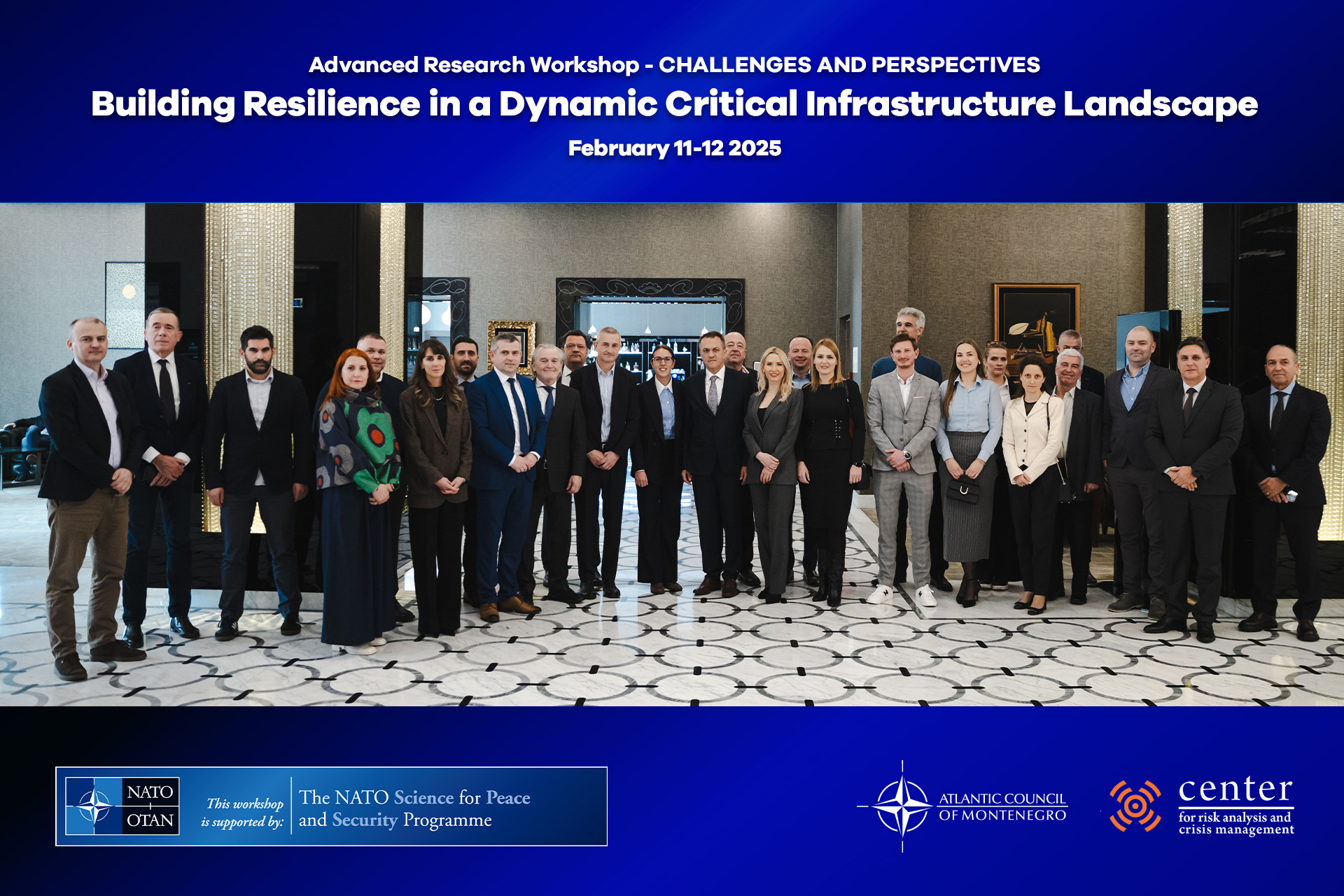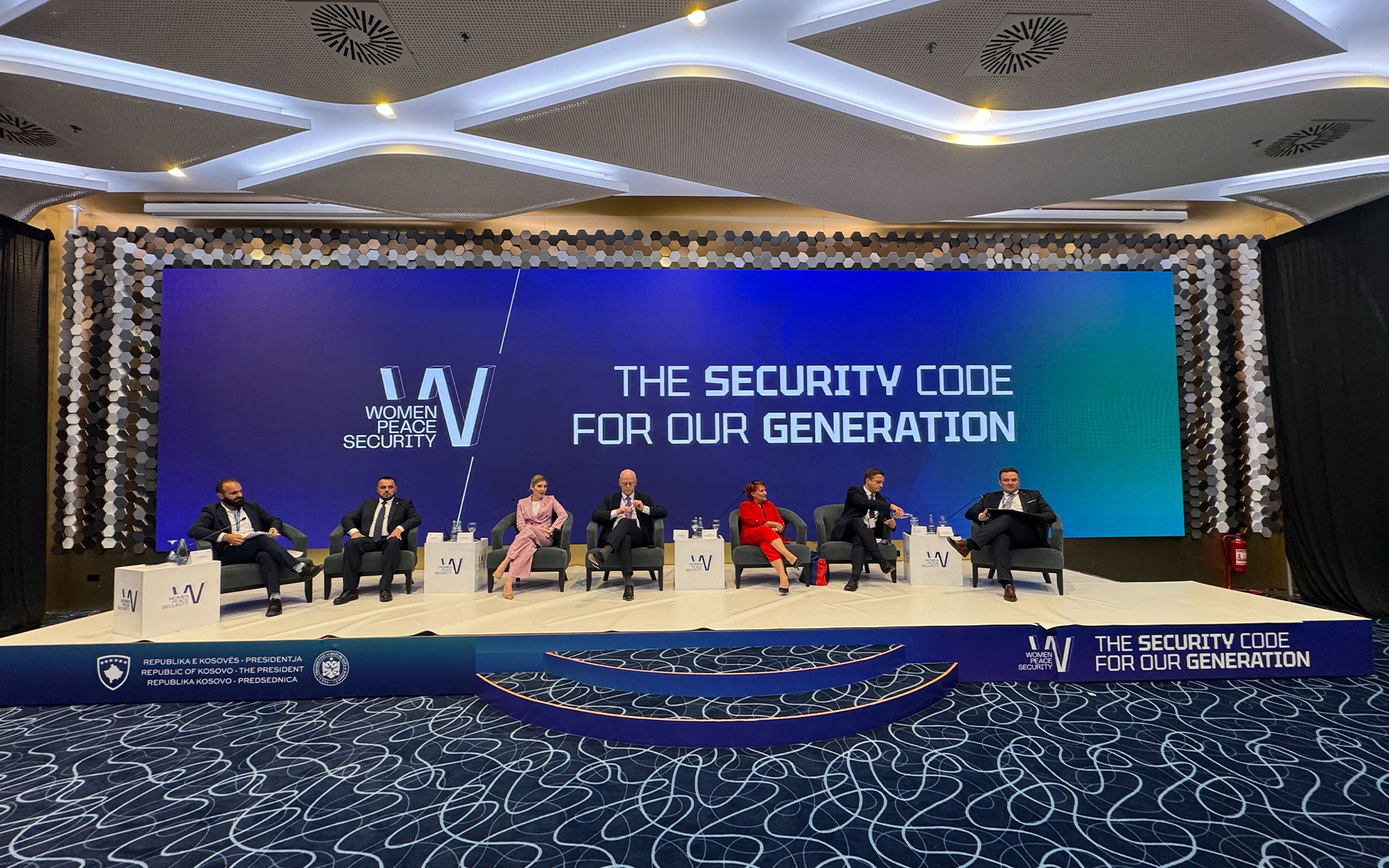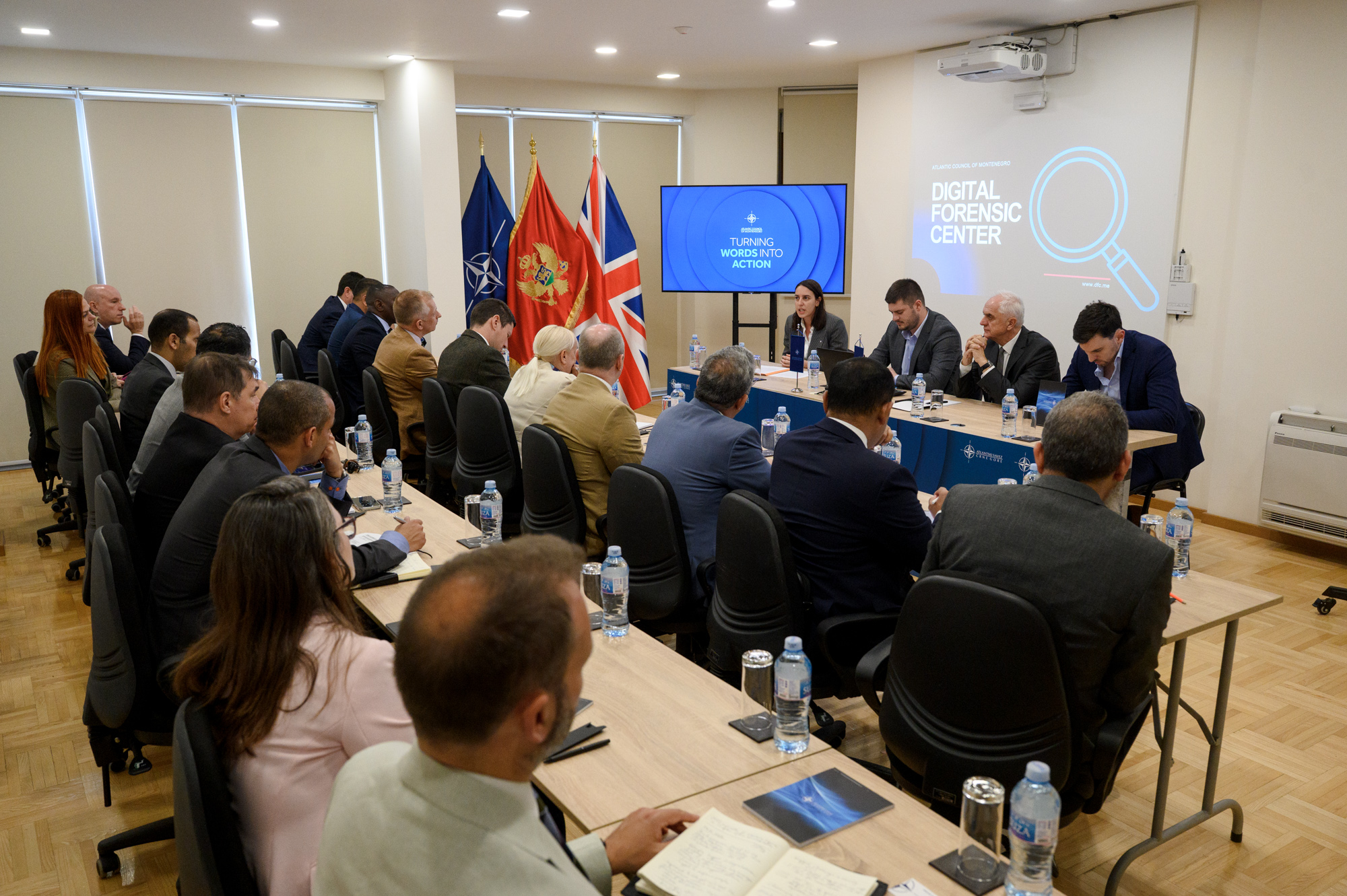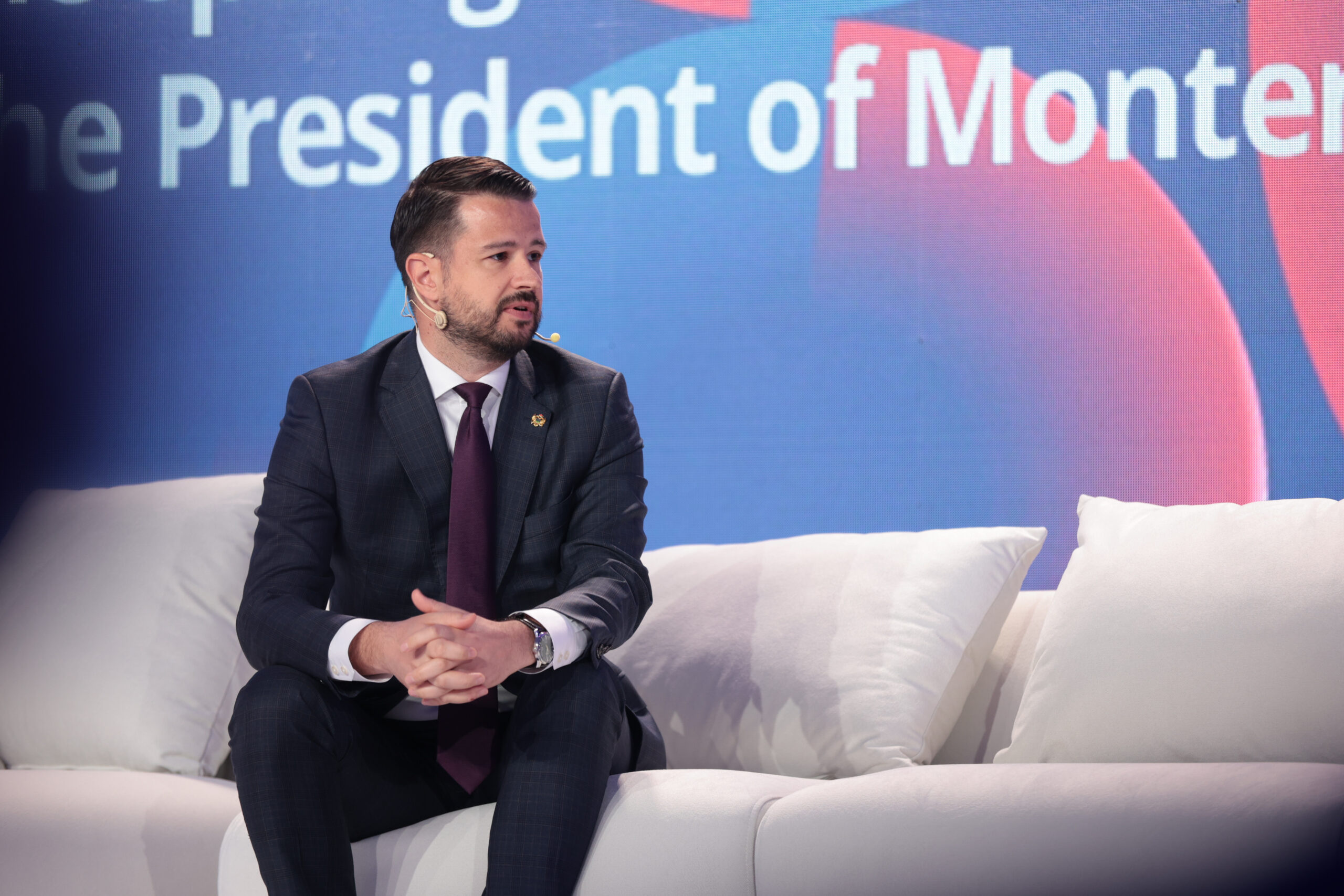The protection of Montenegrin and regional critical infrastructure—energy, transportation, and ICT—depends on strong cross-sector and cross-border cooperation, the ability of state actors to adapt to new threats, the recognition of the military’s role in protecting critical infrastructure, and the building of trust and credibility among partners.
This was the conclusion of the expert conference “Advanced Research Workshop (ARW) – Challenges and Perspectives: Building Resilience in a Dynamic Critical Infrastructure Environment”, organized this week by the Atlantic Council of Montenegro in collaboration with the Center for Risk Analysis and Crisis Management from Belgrade. This activity was supported by the NATO Science for Peace and Security (SPS) program under grant [G7742].
This international conference gathered 50 participants in Podgorica from NATO and partner countries, the region, and Europe, including critical infrastructure experts, representatives from academia, and both the public and private sectors. They discussed one of today’s most pressing challenges—the protection of national critical infrastructure.
Cybersecurity, Hybrid Threats, and Rapid Adaptation
One of the key issues highlighted during the four panel discussions, which featured 16 experts from Montenegro, the region, and Europe, was cybersecurity. This is a growing challenge worldwide, and experts emphasized that no single entity or country can tackle these threats alone. The increasing trend of hybrid attacks, in which cyber threats are combined with political, economic, or military objectives, was also underscored.
Regulatory Challenges and the Need for Harmonization
Participants also pointed out the growing complexity of regulatory frameworks, which, while providing guidance, also pose challenges—particularly for smaller countries. The need for improved coordination between different sectors and national bodies was emphasized to avoid inefficiencies and ensure the effective implementation of regulations.
Education as the Foundation of Critical Infrastructure Protection
The conference also addressed the gap between academic education and practical training. While universities offer courses related to critical infrastructure protection (CIP), comprehensive academic programs remain rare, leaving graduates without practical experience and crisis management skills in real-world situations.
Some ways to strengthen capacities in these areas include introducing industry-supported internships and training programs to bridge the gap between academic education and practical applications. Additionally, establishing regional programs that bring together experts to facilitate knowledge exchange and incorporating case studies, crisis situation simulations, and resilience testing into educational curricula were discussed.
The conference concluded that achieving these goals requires a joint approach at the Southeast European level to effectively address the challenges discussed.









